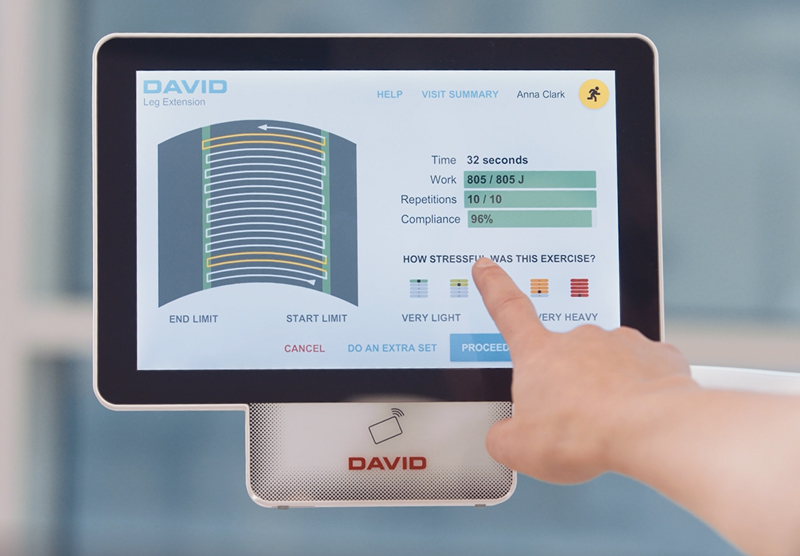Research - Validation Studies
Lumbar muscle fatigue and recovery : Evaluation of electromyography in patients with long-term low-back pain and in healthy subjects.
Year: 2002 Country: Sweden Study Population: 57 chronic low back pain patients/55 healthy controls
Elfving B. Lumbar muscle fatigue and recovery: Evaluation of electromyography in patients with long-term low-back pain and in healthy subjects. Karolinska Institutet. Doctoral Dissertation; 2002.
Objective
To evaluate a test method to estimate lumbar muscle fatigue using frequency analysis of the electromyographic (EMG) signal during isometric contraction.
Methods
Participants performed back extension test: maximal voluntary contraction (MVC) torque, 45 s isometric fatigue contraction at 80% of MVC, 5 s contractions after 1, 2, 3 and 5 min in the recovery period. EMG was recorded bilaterally at spinal levels L1 and L5. To study reliability, the test was repeated five times by 11 of the healthy subjects and once by 20 of the patients.
Also, 15 of the healthy participants performed the fatigue test at 40% and 80% of MVC with both 2 cm and 4 cm interelectrode distances. EMG variables were initial median frequency, median frequency slope and recovery half-time.
Outcome
The initial median frequency and median frequency slope were sensitive to the exerted torque. The low back pain patients had lower MVC torque, higher initial median frequency at L5, and by flatter slope and longer recovery half-time at both lumbar levels compared to the healthy controls.
Using EMG initial median frequency, slope and recovery half-time in combination with MVC, about 80% of the patients and the healthy controls could be correctly classified.
Also, subjective assessments of health-related factors were related to EMG fatigue and recovery.
